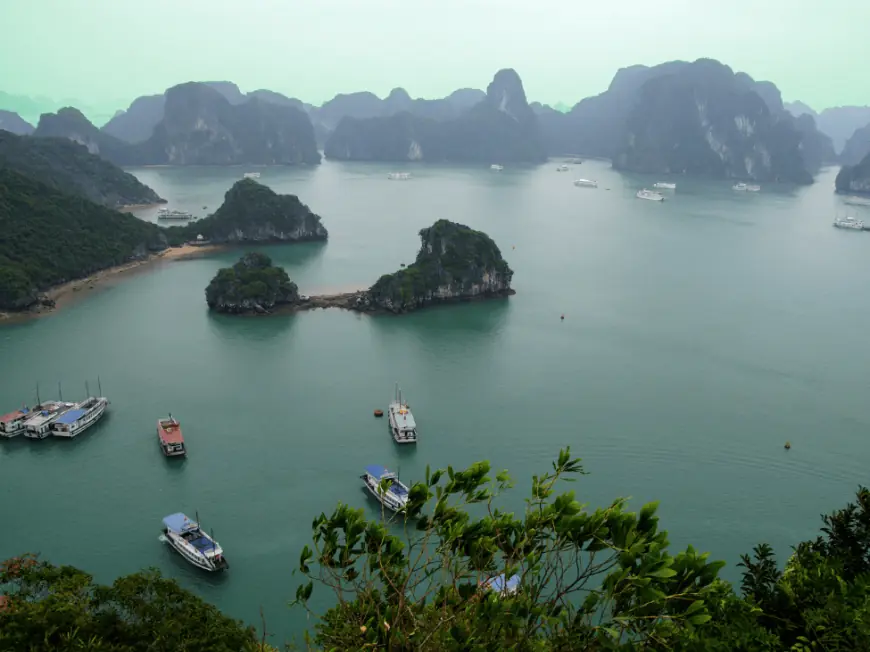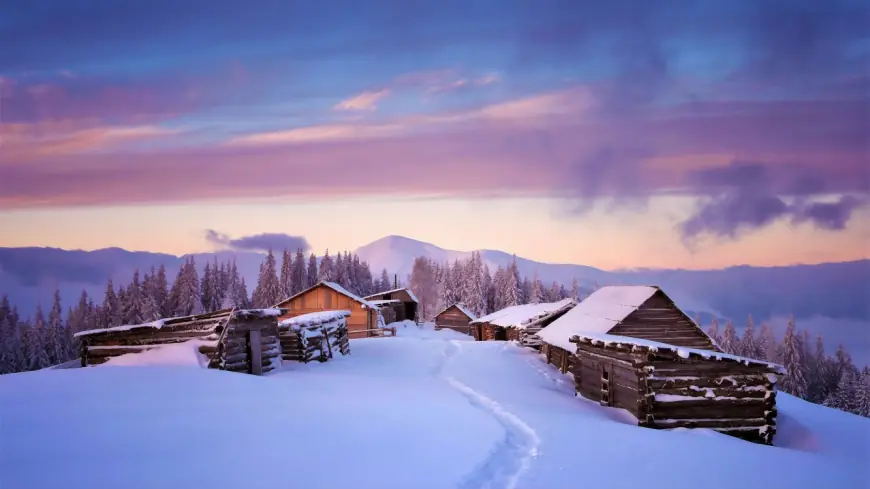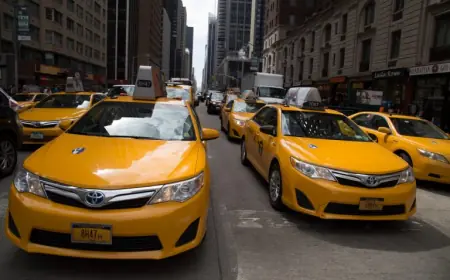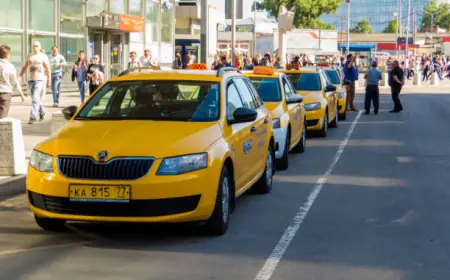The Ultimate Vietnam Winter Tour Guide for Travelers
Winter in Vietnam, from November to February, is a magical time for travelers seeking comfort, beauty, and cultural richness. With cool breezes in the north, mild sunshine along the coast, and dry skies in the south, it’s the perfect season for a Vietnam tour or a relaxing Vietnam vacation. From misty mountains in Sapa to lantern-lit streets in Hoi An and tropical beaches in Phu Quoc, winter offers diverse experiences for every traveler. Enjoy vibrant festivals, mouth-watering local dishes, and scenic landscapes without the summer heat. Secure your Vietnam eVisa easily and explore the country’s charm in its most pleasant months. Let the wonders of Vietnam tourism this winter inspire your next unforgettable journey.

When travelers think about Vietnam, their minds often drift to lush green rice paddies, golden beaches, and vibrant street markets. But there’s another side to this Southeast Asian gem that’s equally captivating — Vietnam’s winter season. Stretching from November to February, winter in Vietnam offers a magical blend of cool, refreshing weather, stunning landscapes, and unique cultural experiences that make it a prime time for travelers. Whether you’re planning a Vietnam tour, seeking a peaceful Vietnam vacation, or applying for a Vietnam eVisa to explore its wonders, this season promises unforgettable memories.
1. When Does Winter Occur in Vietnam?
Unlike Western countries where winter often means heavy snow, Vietnam’s winter season brings varied weather depending on the region.
-
Northern Vietnam (Hanoi, Sapa, Ha Giang): Winter is cool to chilly, with temperatures between 10°C to 20°C. Mountainous areas like Sapa may even see frost, turning the scenery into a dreamy mist-filled paradise.
-
Central Vietnam (Hue, Hoi An, Da Nang): Winter is mild, with pleasant temperatures and fewer crowds, perfect for sightseeing and heritage tours.
-
Southern Vietnam (Ho Chi Minh City, Mekong Delta): Here, winter feels more like a dry, warm season, with blue skies and comfortable conditions.
This diverse climate means that Vietnam travel during winter can be tailored to your preferences — from cozy mountain retreats to sun-soaked coastal escapes.

2. Why Winter is the Perfect Time for Tourists
There’s something special about traveling during Vietnam’s winter months. The heat and humidity of summer give way to crisp mornings, sunny afternoons, and cool evenings. This makes exploring temples, markets, and natural wonders much more enjoyable.
For those on a Vietnam tour, winter also brings:
-
Fewer Crowds – Popular destinations are less crowded compared to peak summer.
-
Better Photography – Soft winter light enhances the beauty of landscapes and architecture.
-
Festive Atmosphere – The lead-up to Lunar New Year (Tet) fills cities with decorations and cultural activities.
Whether you’re visiting bustling Hanoi, charming Hoi An, or the vibrant streets of Ho Chi Minh City, winter offers the perfect balance between comfort and adventure.
3. The Scenic Beauty of Vietnam in Winter
Northern Highlands
In places like Sapa and Ha Giang, winter transforms terraced rice fields into misty dreamscapes. The cool air makes trekking through mountain villages more comfortable, and the fog-covered valleys create a sense of mystery and romance.
Heritage Towns
Hoi An glows in winter, with lantern-lit streets and mild evenings perfect for riverside dining. Hue, with its ancient citadel and royal tombs, feels serene under soft winter skies.
Coastal Bliss
In Nha Trang and Phu Quoc, winter means dry, sunny days — ideal for beach lovers seeking a tropical twist to their Vietnam vacation.
4. Popular Winter Activities in Vietnam
Traveling in Vietnam’s winter season opens doors to experiences you might miss in other months.
-
Mountain Trekking in Sapa – Cool weather makes hikes to ethnic minority villages more enjoyable.
-
Exploring Hanoi’s Old Quarter – Wander through narrow streets filled with street food stalls, coffee shops, and cultural landmarks.
-
Cruising Halong Bay – Winter fog adds a mystical charm to the limestone karsts and emerald waters.
-
Beach Relaxation in Phu Quoc – Enjoy golden sands without the scorching heat.
-
Cycling in the Countryside – Central Vietnam’s mild temperatures make it perfect for bike tours through rice paddies and rural villages.
5. Winter Festivals and Cultural Highlights
Winter in Vietnam isn’t just about the weather — it’s also a time for celebrations.
-
Christmas in Big Cities – While not a national holiday, festive lights, decorations, and events fill places like Hanoi, Da Nang, and Ho Chi Minh City.
-
Tet Preparations – The weeks leading to Lunar New Year see streets bustling with flower markets, food stalls, and traditional music.
-
Local Fairs and Cultural Shows – Many rural areas hold cultural events, offering a glimpse into traditional crafts, dances, and cuisine.
6. Best Destinations for a Vietnam Winter Vacation
Hanoi
The capital city’s cooler climate makes it ideal for walking tours, visiting museums, and enjoying street food without the heat.
Sapa
A must-visit for nature lovers, Sapa’s winter brings crisp air and stunning views of misty valleys and mountains.
Hoi An
With its UNESCO-listed ancient town, riverside cafes, and lantern-lit nights, Hoi An is a photographer’s dream in winter.
Da Nang
Known for its beaches and modern attractions, Da Nang offers pleasant weather perfect for sightseeing.
Ho Chi Minh City
Though warmer, the dry conditions make exploring markets, museums, and nearby Mekong Delta villages a delight.
7. Culinary Delights of Vietnam’s Winter Season
Winter is the perfect excuse to indulge in Vietnam’s hearty, warming dishes.
-
Pho – Steaming bowls of beef or chicken noodle soup are a must.
-
Hot Pot (Lau) – Popular in northern Vietnam during cooler nights, shared among friends and family.
-
Grilled Street Foods – From skewered meats to roasted chestnuts, street corners come alive in winter.
-
Egg Coffee – A Hanoi specialty, perfect for warming up after a day of exploring.
For food lovers on a Vietnam tour, winter is a culinary paradise.
8. Planning Your Vietnam Tour for the Cool Season
-
Pack Smart – Light jackets for the south, warmer layers for the north.
-
Plan Regional Itineraries – Mix mountain and coastal destinations for a balanced experience.
-
Book Early – Winter festivals and Tet can lead to busy travel periods.
-
Try Local Experiences – Cooking classes, cycling tours, and homestays are especially enjoyable in the cooler season.
9. Why Choose a Vietnam Winter Tour Package
Booking a Vietnam tour in winter offers the ease of expert planning, from accommodation to guided activities. Many packages focus on seasonal highlights, ensuring you get the most out of your trip. Pairing this with a quick Vietnam eVisa application means your dream Vietnam vacation is just a few clicks away.
Vietnam’s Winter is Waiting
From misty mountain views in Sapa to golden beaches in Phu Quoc, Vietnam’s winter season is a journey of contrasts and beauty. It’s a time when the weather is kind, the scenery breathtaking, and the cultural charm at its peak. Whether you’re after adventure, relaxation, or cultural discovery, winter is the season when Vietnam tourism truly shines.
So, pack your bags, secure your Vietnam visa, and set off on a journey where every corner reveals a story, and every moment feels timeless.
What's Your Reaction?
 Like
0
Like
0
 Dislike
0
Dislike
0
 Love
0
Love
0
 Funny
0
Funny
0
 Angry
0
Angry
0
 Sad
0
Sad
0
 Wow
0
Wow
0


























































